Disclosure: This article contains affiliate links. We may earn a commission from purchases at no extra cost to you, which helps our travel content.
Standing at the edge of Vatnajökull National Park, with the ancient ice cap stretching before me like a frozen sea, I felt that familiar duality that has defined much of my life—the Japanese concept of ma, the powerful space between things. Here in southeastern Iceland, near the fishing town of Höfn, the space between mountain and glacier creates a landscape that speaks to both sides of my heritage. The rugged volcanic peaks remind me of my hiking expeditions in Northern California, while the meditative silence of the glacial landscape evokes memories of winter ascents in the Japanese Alps. After three visits to this remarkable corner of Iceland, I've compiled this guide to help groups of travelers—from casual hikers to seasoned mountaineers—experience the transformative power of Höfn's mountain trails while respecting the fragile ecosystem that makes this region so extraordinary.
Understanding Höfn and the Vatnajökull Region
Höfn (pronounced roughly like 'Hup' with a silent n) serves as the perfect base camp for exploring the southeastern portion of Vatnajökull National Park, which covers nearly 14% of Iceland's total landmass. This small harbor town of just over 2,000 residents offers a surprising array of amenities for travelers while maintaining an authentic Icelandic character that larger tourist destinations sometimes lack.
What makes this region truly remarkable is the dramatic meeting of opposites: Europe's largest glacier descending from ancient volcanic mountains toward the sea. The name Vatnajökull translates roughly to 'Water Glacier,' though this modest description hardly captures the breathtaking scale of an ice cap that covers approximately 8,100 square kilometers and reaches depths of nearly 1,000 meters in places.
During my first visit five years ago, I was struck by how the landscape embodies the Japanese aesthetic principle of wabi-sabi—the beauty found in impermanence and imperfection. The glacier is simultaneously ancient and ephemeral, its surface constantly changing as it slowly retreats due to climate change. This visible evidence of our planet's warming adds a poignant dimension to any hiking experience here.
The region's geological history reads like an epic saga. Volcanic eruptions beneath the ice cap have created surreal landscapes of twisted lava formations, while glacial rivers have carved deep canyons through the volcanic rock. For someone who has studied sustainability practices across continents, witnessing these powerful natural processes firsthand provides a humbling perspective on human impact and the resilience of natural systems.
Before setting out on any trail in this region, I strongly recommend spending at least half a day at the Vatnajökull National Park Visitor Centre in Höfn. Their interactive exhibits provide crucial context about the area's formation, ecology, and the ongoing conservation efforts that allow us to experience these landscapes responsibly.
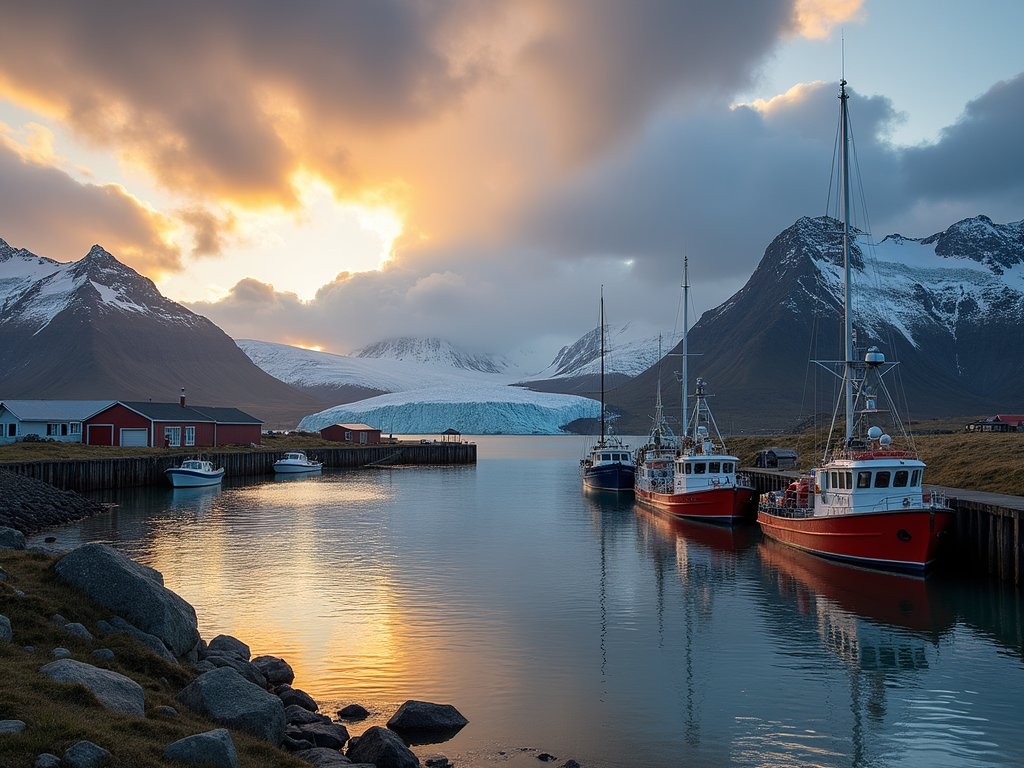
💡 Pro Tips
- Download the official Vatnajökull National Park app for offline trail maps and real-time weather alerts
- Visit the local wool shop in Höfn for sustainable, locally-made hiking accessories that support the community
- Consider hiring a local guide for your first hike to gain deeper insight into the region's geology and folklore
Essential Gear for Vatnajökull Hiking
The weather in southeastern Iceland demands respect and preparation, even during the relatively stable summer months. During my week-long trek last June, I experienced everything from brilliant sunshine to sideways rain and near-freezing temperatures—sometimes within the same afternoon. This mercurial climate requires a thoughtful approach to packing that balances weight concerns with safety considerations.
The foundation of any hiking kit for this region begins with proper layering. I've found that a merino wool base layer provides the ideal combination of temperature regulation and natural odor resistance for multi-day treks. My merino hiking socks have proven invaluable across three Iceland trips—they maintain warmth even when wet and prevent blisters during long days on uneven terrain.
While summer temperatures typically range between 8-15°C (46-59°F), the wind chill factor near glaciers can make it feel significantly colder. A waterproof outer shell is non-negotiable. After my first visit where my inadequate rain jacket left me soaked during an unexpected squall, I invested in a Gore-Tex hiking jacket that has since protected me through Iceland's notorious weather shifts while remaining breathable during strenuous ascents.
Footwear deserves special consideration in this environment. The terrain varies dramatically from well-maintained gravel paths near popular viewpoints to loose volcanic scree and muddy moraines on more remote trails. Waterproof hiking boots with ankle support and aggressive tread patterns are essential. Break them in thoroughly before your trip—the remote nature of many trails means that even minor blisters can develop into significant problems.
Navigation tools require redundancy. While many trails near Höfn are well-marked, visibility can deteriorate rapidly in fog or precipitation. I carry both paper maps (available at the visitor center) and digital navigation tools. A GPS device with preloaded routes provides security, but remember that battery life can be compromised in cold conditions. Always carry a traditional compass and know how to use it.
Finally, don't underestimate the importance of sun protection. The combination of high latitude and reflective surfaces (snow, ice, and water) creates intense UV exposure, even on cloudy days. Quality sunglasses, high-SPF sunscreen, and a brimmed hat are essential items that many visitors overlook when packing for Iceland's cooler climate.
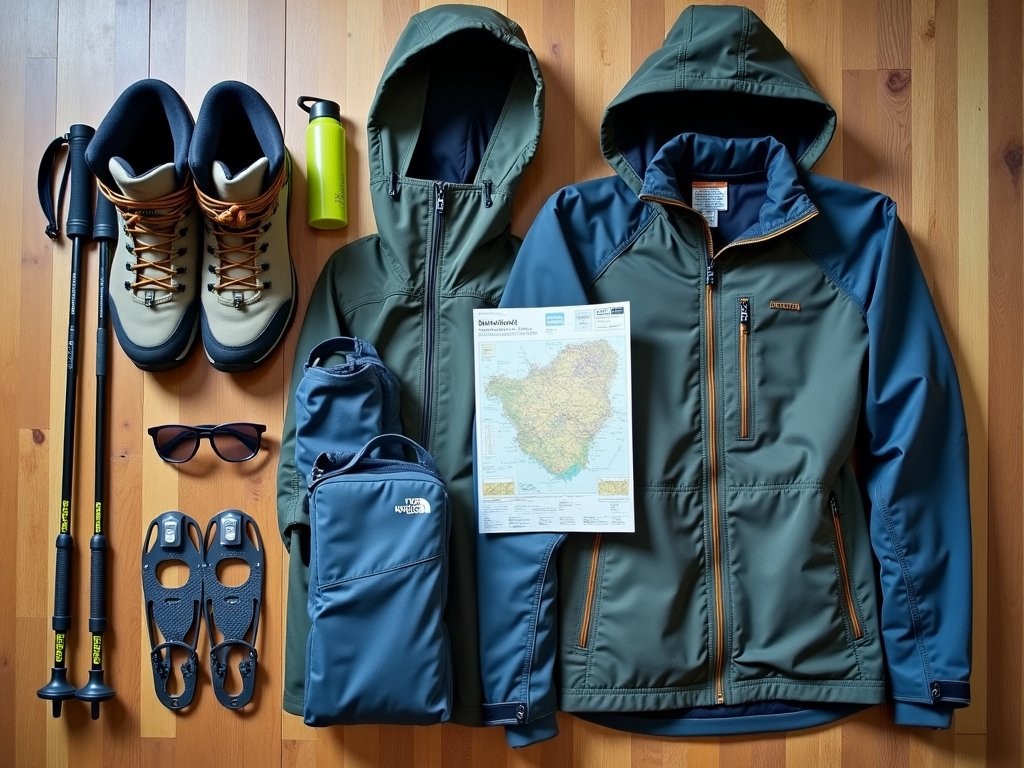
💡 Pro Tips
- Pack microspikes even in summer for unexpected icy patches on higher elevation trails
- Bring a thermos for hot tea/coffee—the warmth provides remarkable psychological comfort during weather changes
- Invest in quick-dry hiking pants rather than traditional cotton—they're worth the extra cost in this environment
Accessible Day Hikes for All Abilities
Not every memorable hiking experience in the Vatnajökull region requires technical skills or exceptional fitness. Some of my most profound moments have occurred on relatively accessible trails that showcase the area's geological wonders while accommodating diverse physical abilities.
The Skaftafell Glacier View Trail (approximately 4km round trip) offers an ideal introduction to the region's landscapes. Beginning at the Skaftafell Visitor Center, this well-maintained path gradually ascends through birch woodland before opening to a panoramic view of Skaftafellsjökull glacier tongue. The contrast between the vibrant green vegetation and the blue-white ice creates a visual harmony that reminds me of the carefully balanced compositions in traditional Japanese landscape paintings. During my most recent visit, I guided a group of friends with varying hiking experience along this trail, and even those with minimal outdoor experience found it manageable and deeply rewarding.
For those seeking a slightly more challenging but still accessible option, the Svartifoss Trail (5.5km round trip) leads to one of Iceland's most photographed waterfalls. What makes Svartifoss (Black Falls) extraordinary are the hexagonal basalt columns that frame the cascading water—nature's perfect expression of geometric precision amid chaos. The trail involves some elevation gain and sections of steps, but frequent benches provide resting points. I recommend starting early in the morning to experience this popular destination before the tour buses arrive.
Families with children will appreciate the Jökulsárlón Glacier Lagoon Shore Walk, which isn't technically a hiking trail but offers an accessible way to experience the mesmerizing landscape where massive icebergs calve from the glacier and float slowly toward the sea. The flat, 1km path along the lagoon's edge allows visitors to observe the ever-changing ice formations and perhaps spot seals swimming among the bergs. Across the road lies Diamond Beach, where wave-polished ice chunks create a surreal sculpture garden on black volcanic sand.
For those with limited mobility who still wish to experience the region's magnificence, the Fjallsárlón Viewing Platform provides wheelchair-accessible views of another glacier lagoon that, while smaller than Jökulsárlón, often offers a more intimate experience with fewer visitors. The platform's thoughtful design exemplifies how accessibility and conservation can work in harmony—a principle I've advocated for in my sustainability work.
While these trails require less technical preparation than the more challenging routes I'll discuss later, proper footwear remains essential. Even on these gentler paths, I recommend wearing waterproof hiking shoes with good traction and carrying a daypack with weather protection layers, water, and snacks. Iceland's weather can change rapidly, and being prepared enhances both safety and enjoyment.
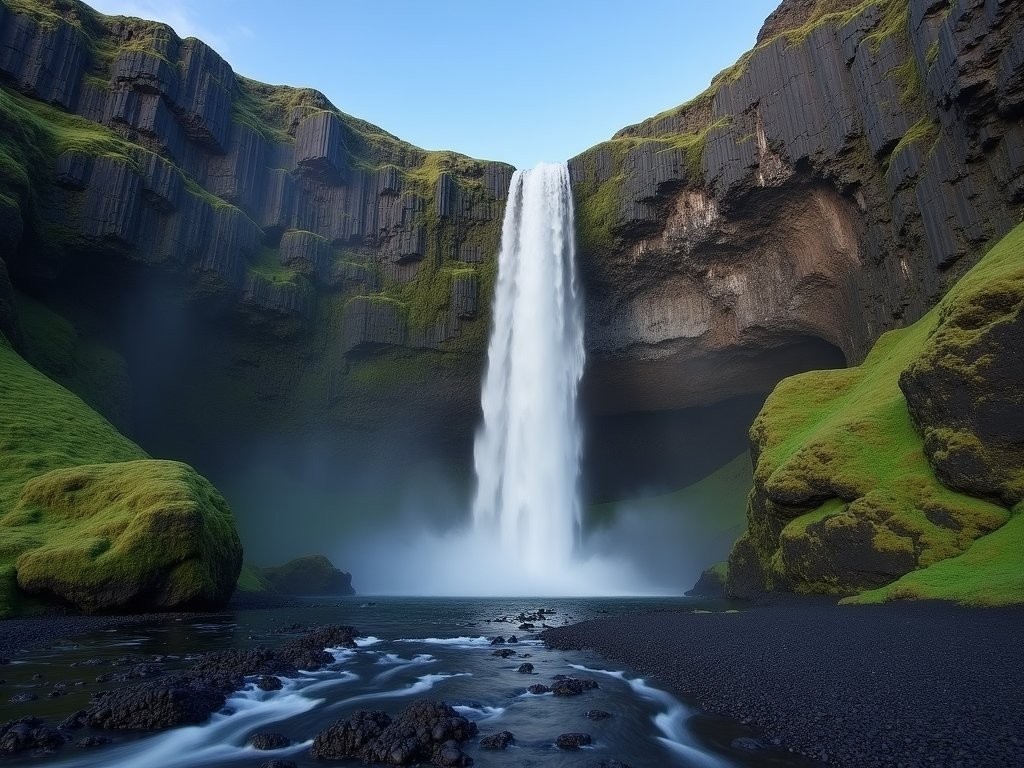
💡 Pro Tips
- Visit Svartifoss in early morning light for the best photography conditions and fewer crowds
- Bring binoculars for wildlife spotting at Jökulsárlón—seals and arctic terns are common sightings
- Pack a small foam sitting pad for comfortable rest breaks on the volcanic rock surfaces
Intermediate Adventures: Glacier-Adjacent Trails
For hikers with solid experience and appropriate fitness levels, the intermediate trails near Höfn offer profound encounters with Iceland's glacial landscapes without requiring technical mountaineering skills. These routes occupy that perfect middle ground—challenging enough to feel like genuine achievements yet accessible enough for well-prepared recreational hikers.
The Kristínartindar Twin Peaks Trail (approximately 14km round trip) has become something of a personal tradition during my visits to the region. Beginning from the Skaftafell Visitor Center, this trail ascends steadily through changing vegetation zones before reaching an alpine plateau with spectacular views of multiple glacier tongues extending from the main Vatnajökull ice cap. The final push to the twin summits involves some mild scrambling but rewards hikers with a 360-degree panorama that encompasses glaciers, mountains, and the distant Atlantic Ocean.
During my last ascent, I was reminded of my grandfather's ceramic studio in Osaka, where he would often speak of finding beauty in the negative space between objects. Here on Kristínartindar, it's the space between the mountain ranges that holds the most power—the vast ice fields flowing like frozen rivers through the valleys below.
The Heinabergsjökull Glacier Trail (8km round trip) offers a less-traveled alternative to the more popular glacier viewpoints. This moderate hike leads to a glacial lagoon that few tour groups visit, providing a more contemplative experience of the ice. The trail crosses several small streams (waterproof boots are essential) before reaching a moraine ridge with views of the glacier tongue. What makes this hike particularly special is witnessing the raw evidence of glacial retreat—a sobering reminder of climate change's impact that connects directly to my professional work in sustainability.
For those seeking a full-day challenge, the Múlagljúfur Canyon Trail (10km round trip) reveals a hidden gem that many visitors to Iceland miss entirely. This otherworldly canyon features multiple waterfalls cascading down moss-covered cliffs that seem plucked from fantasy literature. The trail can be muddy and occasionally faint, making navigation skills important. I recommend using trekking poles for this route, as they provide crucial stability on the steeper, slippery sections while reducing impact on knees during the descent.
While these intermediate trails don't require technical climbing equipment, they demand respect and proper preparation. Weather conditions can deteriorate rapidly, so carrying a packable insulated jacket is essential even on seemingly clear summer days. I've found this particular mid-layer invaluable during unexpected temperature drops near glaciers, where the microclimate can be significantly colder than surrounding areas.
All these trails require carrying sufficient water (at least 2 liters per person) and high-energy snacks. The physical exertion combined with the cool air often masks dehydration until it becomes problematic. During my hikes in this region, I've developed a routine of drinking small amounts frequently rather than waiting until thirst signals—a practice I recommend to all visitors.
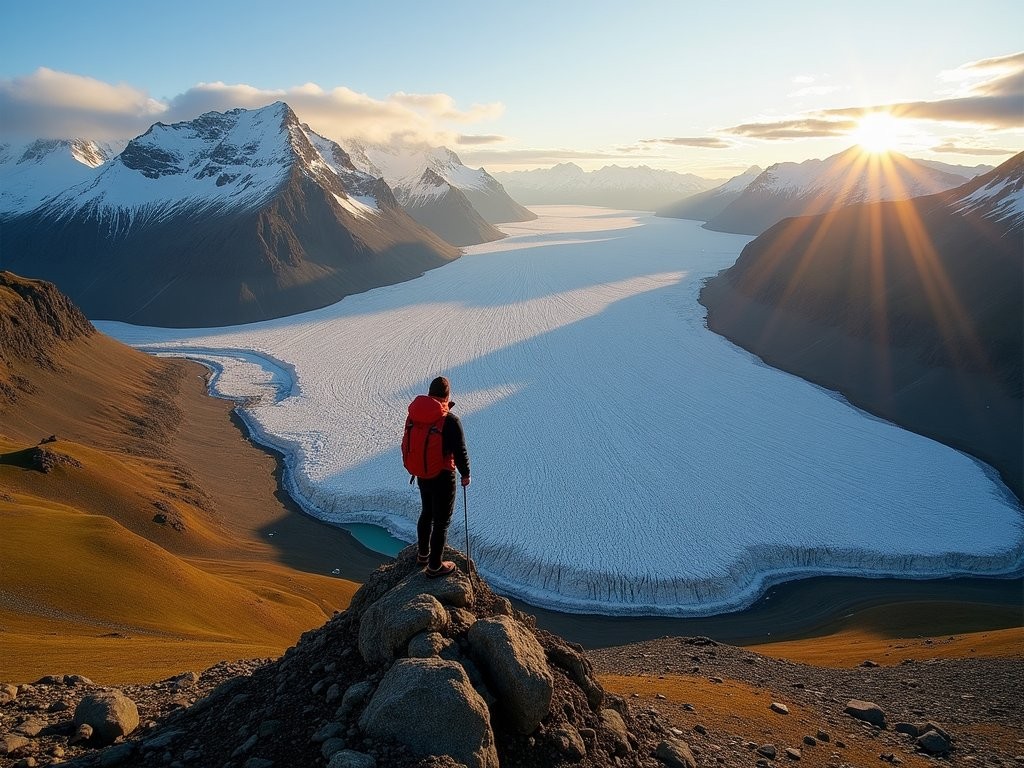
💡 Pro Tips
- Start Kristínartindar no later than 9am to ensure sufficient time and avoid afternoon weather changes
- For Múlagljúfur Canyon, photograph the waterfalls with a slow shutter speed to capture the ethereal quality of falling water against moss
- Register your hiking plan with SafeTravel.is before setting out on intermediate trails—it's free and could save your life if conditions change
Advanced Treks: Multi-Day Mountain Adventures
For experienced hikers seeking true immersion in the Vatnajökull region's most remote landscapes, several multi-day treks offer profound wilderness experiences that few visitors ever witness. These advanced routes demand thorough preparation, solid navigation skills, and complete self-sufficiency—but the rewards are commensurate with the challenge.
The Öræfajökull Circuit (3-4 days, approximately 40km) circumnavigates Iceland's highest peak, which also happens to be an active volcano beneath the ice cap. This demanding trek traverses varied terrain from lush valleys to barren moonscapes and high mountain passes. When I completed this circuit two summers ago, I experienced that rare sense of true solitude that has become increasingly elusive in our connected world. For hours at a time, the only sounds were the wind, distant glacial creaks, and my own footsteps—a meditative state that reconnected me with the mountain hiking of my youth in Japan.
This circuit requires careful planning as there are limited established campsites and no facilities along most of the route. Water sources are plentiful but should be treated with a reliable water filter to remove glacial silt and potential biological contaminants. This ultralight filtration system has become an essential part of my backcountry kit, particularly in glacial environments where water often contains fine sediment that can damage other filtration systems.
The Lónsöræfi Wilderness Trek (4-5 days, 60km) explores the remote eastern highlands adjacent to Vatnajökull. This challenging route through rhyolite mountains with their distinctive pastel coloration offers some of Iceland's most dramatic and least-visited landscapes. The multi-colored mountains against the distant white of the glacier create compositions that remind me of the careful balance in traditional Japanese landscape paintings—where negative space holds as much importance as the subjects themselves.
This trek requires multiple river crossings, some of which can be dangerous after heavy rain or during periods of increased glacial melt. Proper technique is essential: unfastening your backpack's hip belt before crossing (so you can quickly shed the weight if you fall), using trekking poles for stability, and crossing early in the morning when glacial melt is at its lowest. During my crossing of the Jökulsá í Lóni river, I was grateful for the lightweight quick-drying hiking pants and dedicated river crossing shoes I had packed.
For both these advanced treks, navigation skills are non-negotiable. While GPS devices are valuable, they can fail due to battery issues or extreme conditions. I always carry detailed topographic maps and a compass, having practiced using them in various conditions before attempting these routes. The Icelandic Hiking Map series (1:100,000 scale) provides excellent detail for these remote areas.
Weather conditions in these high mountain environments can change dramatically and rapidly. When planning my Öræfajökull Circuit, I built in a flexible itinerary with extra food and fuel to accommodate potential weather delays. This foresight proved valuable when I needed to wait out an unexpected 24-hour period of high winds at a protected campsite. Remote mountain weather in Iceland demands both respect and patience.
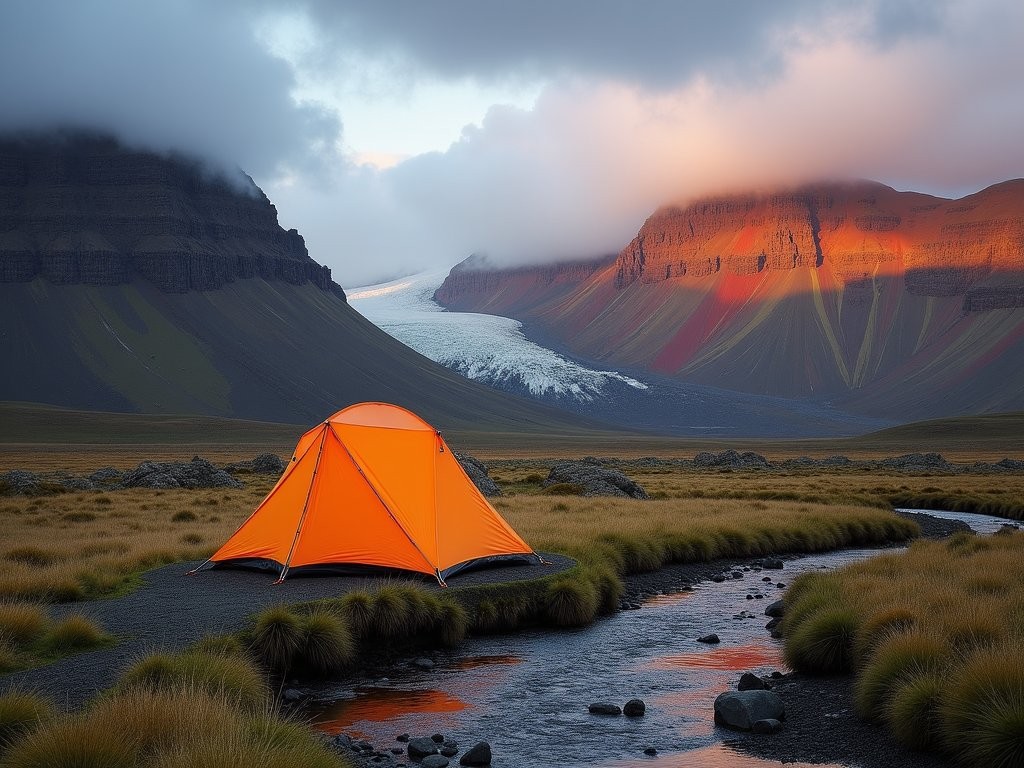
💡 Pro Tips
- For river crossings, pack dedicated water shoes rather than crossing barefoot—the glacial water temperature can cause painful numbing within seconds
- Build in at least one extra day of supplies for weather contingencies on multi-day routes
- Use dry bags inside your backpack even if it has a rain cover—Iceland's combination of rain and wind can penetrate most pack covers
Sustainable Hiking Practices in a Fragile Ecosystem
As both a sustainability professional and passionate mountaineer, I feel a particular responsibility to address the environmental impact of hiking in Iceland's fragile ecosystems. The Vatnajökull region, with its unique combination of volcanic activity and glacial features, is especially vulnerable to human disturbance. The delicate balance that has evolved here over millennia can be easily disrupted by careless visitors, yet with mindful practices, we can experience these magnificent landscapes while preserving them for future generations.
The concept of Leave No Trace takes on heightened importance in Iceland, where the extreme climate means that environmental damage recovers exceptionally slowly. Vegetation in these high-latitude environments might take decades to regrow after being trampled, while marks left in some volcanic soils can persist for centuries. During my treks, I've observed with dismay how some popular viewpoints show widening paths and vegetation loss as visitors step off designated trails for photographs.
One of the most critical practices is strict adherence to established paths. The Icelandic saying "Gakktu um landið eins og þú elskir það" (Walk about the land as if you love it) encapsulates the mindful approach needed. When trails become muddy—a common occurrence in this climate—walk through the mud rather than around it, which only widens the impacted area. Waterproof boots are essential not just for comfort but for minimizing your environmental footprint.
Waste management requires particular attention in remote areas without facilities. All trash must be packed out, including food scraps that might seem biodegradable but decompose extremely slowly in Iceland's cool climate and can introduce non-native nutrients to sensitive ecosystems. For multi-day treks, I use a dedicated dry bag specifically for carrying out waste, which prevents odors from permeating my other gear while ensuring nothing is left behind.
Human waste disposal presents unique challenges in this environment with thin soils and slow decomposition rates. In areas without facilities, proper catholes should be dug at least 70 meters from water sources, much farther than the standard recommendation for other environments. All toilet paper should be packed out rather than buried, as it decomposes very slowly in this climate. Biodegradable soap, even those marketed as environmentally friendly, should never be used directly in Iceland's pristine water sources.
Camping practices also require careful consideration. The general rule in Iceland is to use designated campsites whenever available. Wild camping regulations have become increasingly strict in response to growing tourism pressure, with many areas now prohibiting it entirely. When permitted, select durable surfaces that won't be damaged by your tent, stay at least 100 meters from water sources, and leave absolutely no evidence of your stay.
Finally, respect for wildlife means observing from a distance without disturbing natural behaviors. Iceland's breeding birds, particularly ground-nesting species like arctic terns and great skuas, are especially vulnerable to disturbance during the summer hiking season. When these birds display agitated behavior (diving, loud calls), it's a sign you're too close to a nest and should retreat immediately along the same path you approached.
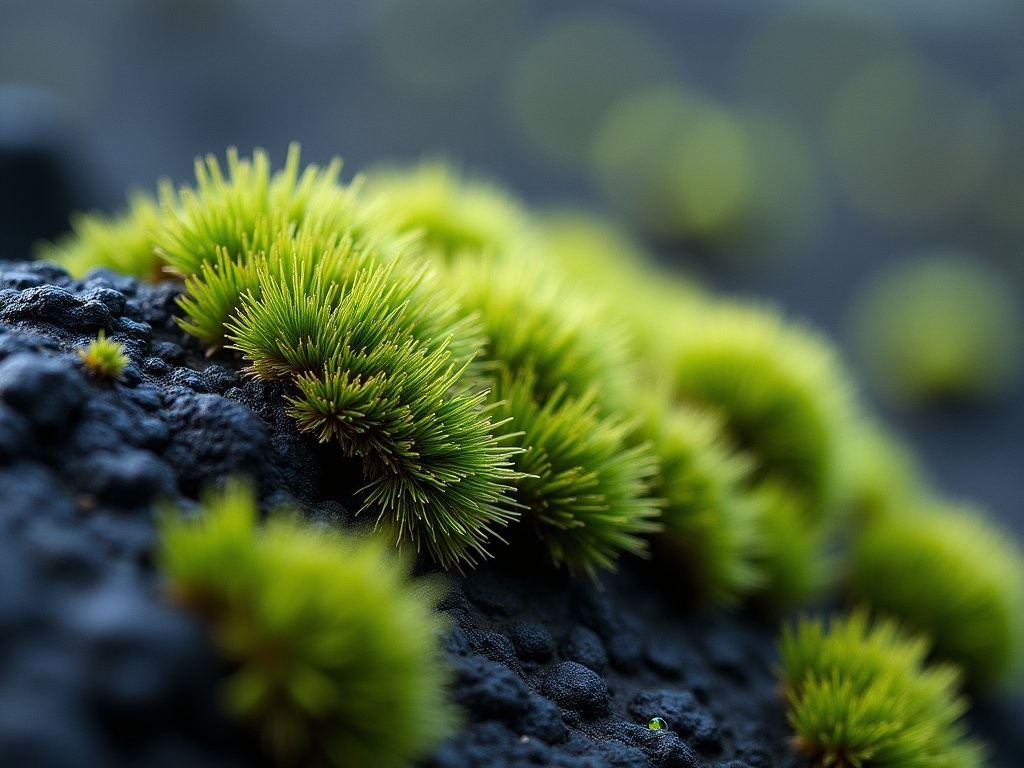
💡 Pro Tips
- Use a smartphone app like iNaturalist to identify and report invasive plant species you might encounter on trails
- Consider carbon offsetting your travel to Iceland through certified local reforestation projects
- Choose accommodations in Höfn that participate in the Vakinn environmental certification program
Final Thoughts
As I stood on the summit of Kristínartindar watching the midnight sun cast a golden glow across Vatnajökull's vast ice field, I was struck by the profound duality of this landscape—simultaneously ancient and ephemeral, powerful yet vulnerable. The mountains surrounding Höfn offer something increasingly rare in our hyperconnected world: genuine wilderness that demands our complete presence and respect. Whether you choose a gentle walk along the glacier's edge or commit to a challenging multi-day trek, these trails provide more than exercise—they offer perspective. In witnessing the slow dance between volcanic fire and glacial ice that has shaped this land for millennia, our own human concerns find their proper scale. As you prepare for your own journey to this remarkable corner of Iceland, remember that the most meaningful souvenirs are not photographs but moments of connection with a landscape that changes us even as we pass through it, leaving nothing behind but footprints that the wind will soon erase.
✨ Key Takeaways
- The Vatnajökull region offers hiking experiences for all ability levels, from accessible glacier viewpoints to challenging multi-day wilderness treks
- Weather conditions can change dramatically and rapidly—always pack layers and rain protection regardless of the forecast
- Practicing strict Leave No Trace principles is essential in Iceland's fragile ecosystems where environmental damage recovers exceptionally slowly
- Connecting with local guides enhances both safety and understanding of the region's unique geological and cultural significance
📋 Practical Information
Best Time to Visit
June through August for most accessible conditions; May and September for fewer crowds but more variable weather
Budget Estimate
$1,500-$2,500 per person for one week including accommodations, car rental, and food (excluding flights)
Recommended Duration
Minimum 5 days, ideally 7-10 days to experience multiple trails and allow for weather flexibility
Difficulty Level
Varies From Easy To Challenging Depending On Selected Trails; Intermediate Fitness Level Recommended For Most Featured Hikes

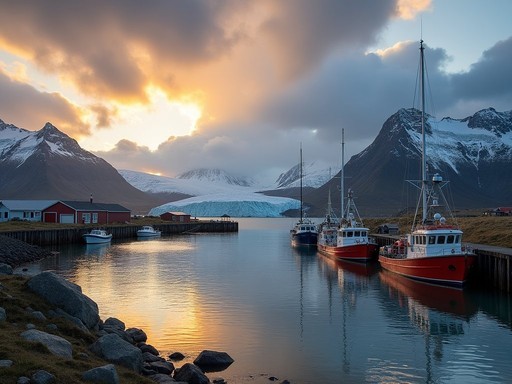
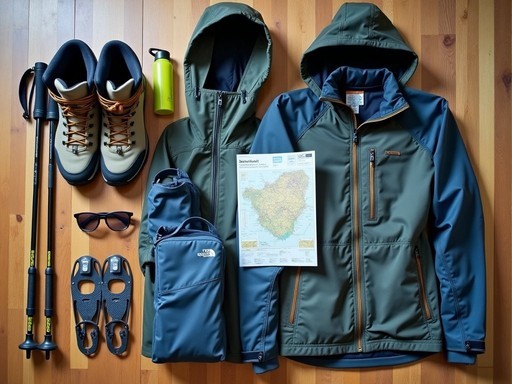
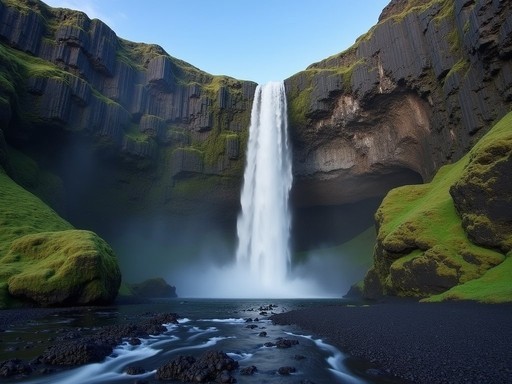
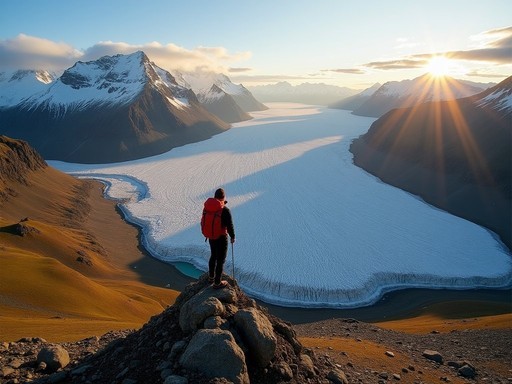
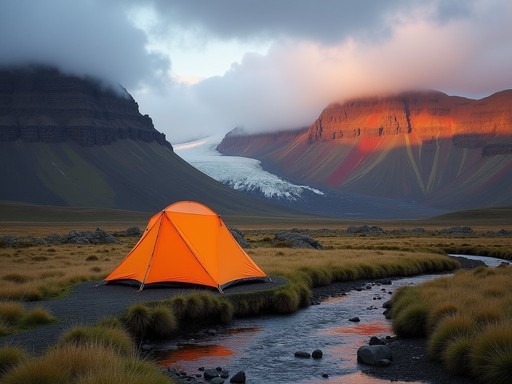
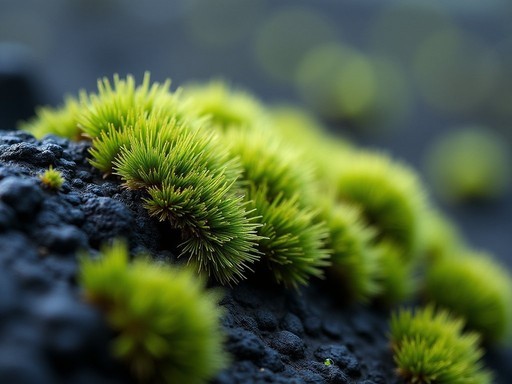


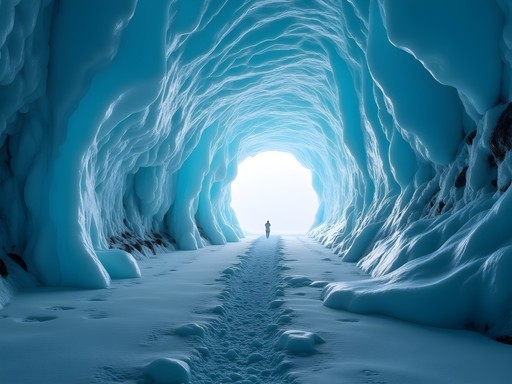
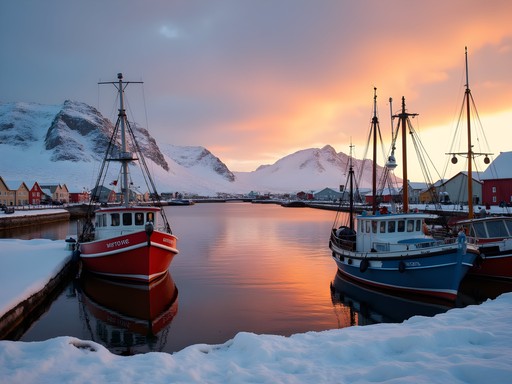
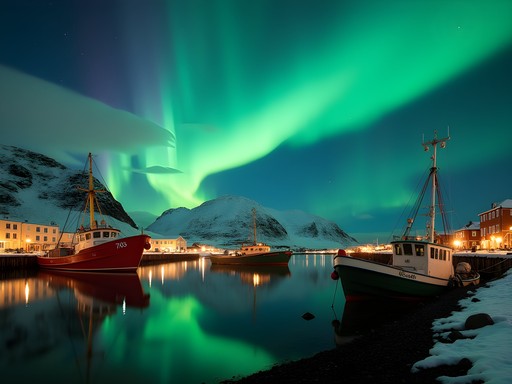
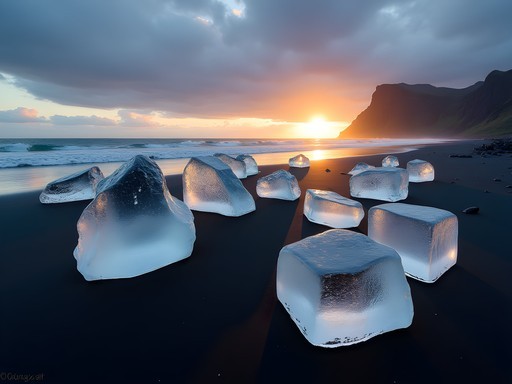


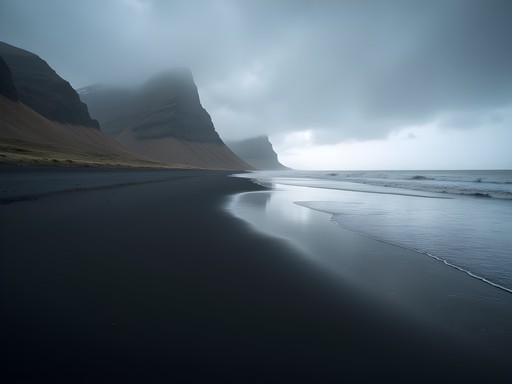

Comments
sunsetqueen
Anyone done these hikes in April? Planning a trip then but worried about conditions. Also wondering if the intermediate trails would be too challenging for someone who's reasonably fit but has mild knee issues?
coolclimber
April can still be pretty snowy and some trails might be closed. I'd stick to the guided glacier walks that time of year. For knees, definitely bring hiking poles - saved mine on the descents!
sunsetqueen
Thanks for the tip! Will look into the guided options instead.
globebuddy
Those glacier photos are INSANE! 😍
Amit Sullivan
Kenneth, your mention of wabi-sabi at the glacier edge resonated deeply with me. I spent three weeks photographing Vatnajökull last autumn, watching the ice transform daily with the changing light. There's something profoundly humbling about standing before something so ancient yet so impermanent. One evening, I shared homemade soup with local farmers who told stories of how the glacier has receded in their lifetime - a stark reminder of our changing world. For those planning visits, I'd add that spending time with locals in Höfn enriched my understanding of the region far beyond what any trail could teach me. The fishermen's tales of weather patterns proved more accurate than any forecast app!
Kenneth Jones
Amit, you've captured exactly what makes this region so special - that intersection of natural wonder and human connection. Those fishermen's weather predictions are legendary! Did you try the langoustine while you were in Höfn?
coolclimber
Just got back from Höfn last week and did the Kristínartindar hike you mentioned! That final ascent nearly broke me but wow, those panoramic views were worth every burning muscle. I wasn't prepared for how quickly the weather shifts though - started in sunshine and ended in thick fog. My GPS watch was a lifesaver when visibility dropped. Your gear list is spot on - especially the layers recommendation!
hikingking
Was the trail well-marked? I'm a bit nervous about navigation since I'll be solo hiking.
coolclimber
Most trails near the visitor center are well-marked, but I'd definitely download offline maps. The weather can change visibility in minutes!
Claire Hawkins
We took our kids (8 and 11) on the Skaftafell waterfall trail last summer and it was magical! The path was manageable even for little legs, and they were absolutely mesmerized by the glacier views. One tip for families: bring twice as many snacks as you think you'll need - something about that crisp mountain air makes everyone ravenous! Also, the visitor center has these adorable junior ranger activity books that kept the kids engaged with identifying local plants and wildlife. Kenneth, your description of that midnight sun glow brought back such vivid memories!
citydiver
Great post! How's the weather in early June? Wondering if I should pack my heavier gear or if lighter layers would work.
Kenneth Jones
Early June can be unpredictable - definitely bring layers! Temperatures usually range from 5-12°C (40-55°F), but wind and rain can make it feel much colder. I'd recommend waterproof outer layers at minimum.
citydiver
Thanks Kenneth! Will definitely pack my shell jacket then.
hikingking
This is EXACTLY what I needed! Planning my first Iceland trip for next summer and Vatnajökull was on my radar but I had no clue where to start. Those beginner trails sound perfect!
Megan Martin
Kenneth - thank you for this comprehensive guide! I visited the Vatnajökull region last September, and I'd add that the shoulder season is actually perfect for these hikes. Fewer tourists, the trails weren't muddy yet, and the glacier views were crystal clear after the summer dust settled. For anyone planning a trip, the ranger station in Skaftafell has daily updates on trail conditions that aren't available online. Also, I found the Jökulsárlón glacier lagoon boat tour worth the splurge - it gives you a completely different perspective of the ice formations that you can't get from the hiking trails.
dreamclimber
Good call on the boat tour! We did that too and the blue ice caves inside some of those icebergs were unreal. Did you get a chance to hike to Svartifoss waterfall?
Megan Martin
Yes! Svartifoss was actually my favorite short hike in the area. Those hexagonal basalt columns are fascinating. Perfect example of what Kenneth mentions about accessible day hikes with big rewards.
dreamclimber
Just got back from Höfn last month and did the Kristínartindar hike Kenneth mentioned. That midnight sun view over the glacier was absolutely worth the climb! One tip though - the weather changed incredibly fast up there. I'd recommend bringing your layering system even on sunny days. We started in t-shirts and ended up bundled up at the summit. The rangers at the visitor center were super helpful with current trail conditions too.
summervibes
How difficult would you say that trail is? I'm looking at the beginner options but wondering if I could manage something more intermediate.
dreamclimber
It's definitely challenging but doable if you have decent fitness. Just take it slow and start early. The trail markers are really clear too, which helps!
mountain_man_pete
Just got back from Höfn last week and hiked several of these trails! The weather was much more challenging than I expected - we had sunshine, rain, fog and wind all in one day on the Stokksnes peninsula. The section about layering gear in your post was spot on. For anyone going, the visitor center staff in Skaftafell were incredibly helpful with up-to-date trail conditions. They steered us away from a route that had become dangerous due to recent rainfall and suggested an alternative that ended up being the highlight of our trip.
wanderguide
Thanks for the visitor center tip! Were the trails well marked or did you need special maps?
mountain_man_pete
The popular trails are well-marked, but for anything off the beaten path, I'd recommend getting detailed maps from the visitor center. Cell service is spotty in places, so don't rely solely on phone apps.
Venture X
Premium card with 2X miles, $300 travel credit, Priority Pass